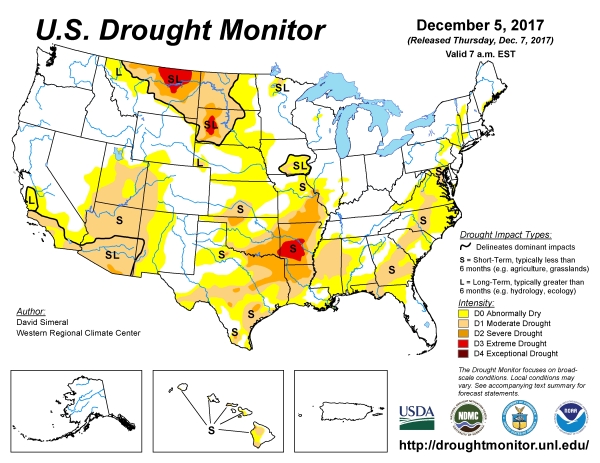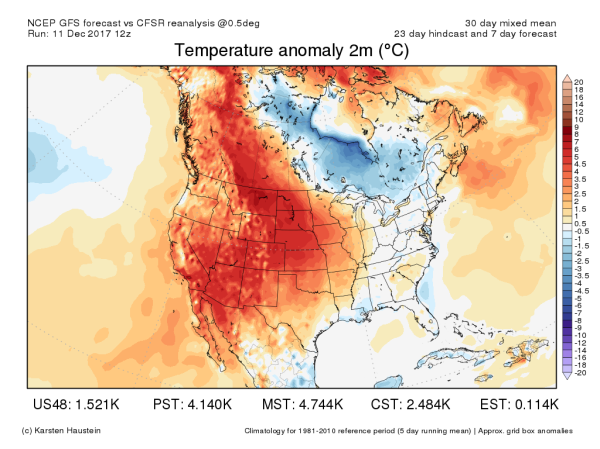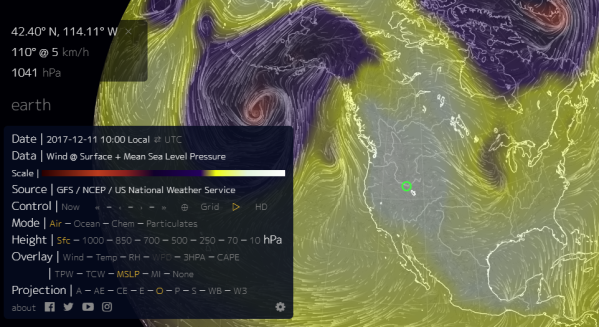After a Brief Respite, Climate Change Enhanced Drought is Returning to the U.S.
11 December, 2017
Unseasonable warmth across the American West and overall dry conditions across the South is causing drought to expand throughout many parts of the United States.
According to the U.S. Drought Monitor, most of the southern half of the United States is presently experiencing abnormally dry or drought conditions. Meanwhile, an intense drought that has remained in place over the Dakotas and Montana for multiple months continues to persist.
Severe drought conditions are now present in the south-central U.S. with exceptional and extreme drought expanding through Arkansas, Oklahoma, Texas, Louisiana and Missouri. Deepening drought in California and Texas are notable due to the fact that Southeast Texas recently experienced record rainfall due to Hurricane Harvey and California experienced a very wet winter and spring period from 2016 to 2017. Somewhat milder drought is also spreading through the Southeast.
Re-expanding Southern California drought is also enhancing record wildfire activity in that state.
Much Warmer than Normal Temperatures
A strengthening La Nina in the Equatorial Pacific is helping to generate a drought tendency for the Southern U.S. However, various climate change related features including above normal temperatures and a persistent high pressure ridge in the West are lending intensity to the rising drought regime.
(U.S. 30 day average shows much warmer than normal conditions for the lower 48 with extreme warmth prevalent over the American West. Image source: Global and Regional Climate Anomalies.)
Over the past 30 days, temperatures for the U.S. as a whole have been 1.52 C above average (see image above). Much of this excess heat has been concentrated over the West, with mountain and Pacific regions seeing between 4 and 5 C above average temperatures.
Excess heat of this kind helps to speed the drying of soils and vegetation by increasing the rate of evaporation. A condition that can lead to flash drought — whose incidence has been expanding in lock-step with the human-forced warming of the globe.
A Ridiculous Ridge
Linked to the western heat and drought is a strong and persistent high pressure ridge. One that has hita very intense 1041 hPa pressure as of Monday afternoon over the U.S. Mountain West.
(Very intense high pressure ridge over the U.S. west is presently locking in both warmer than normal and drier than normal conditions. Image source: Earth Nullschool.)
Persistent ridging of this kind was a key feature of the recent 2012 through 2017 California drought. Some climate studies have identified a tendency of these kinds of strong western ridges to form as Arctic sea ice recedes. And during the past decade, strong high pressure ridges have been a rather consistent and significant climate feature for the U.S. West. It is also notable that formation of more powerful ridging features during the fall and winter help to strengthen the Santa Ana winds — which fan California wildfires.
Present drought is nowhere near as intense as it has been during recent years. Especially in California which during 2017 has experienced a bit of a respite. However, with La Nina gaining traction in the Pacific, with global temperatures now in a range between 1.1 and 1.2 C above 1880s averages, and with persistent ridging again taking hold over the U.S. West, the risk of a return to intense drought — especially for the Southwest — is increasing.






No comments:
Post a Comment
Note: only a member of this blog may post a comment.